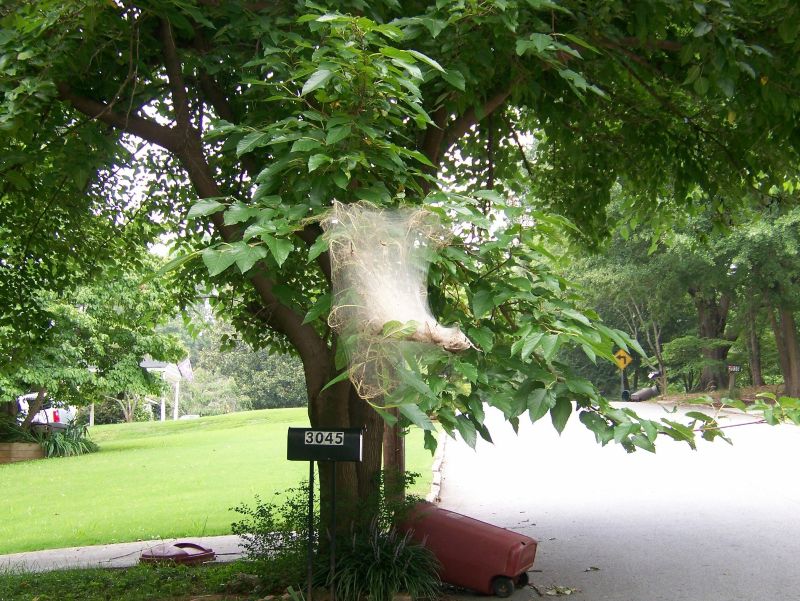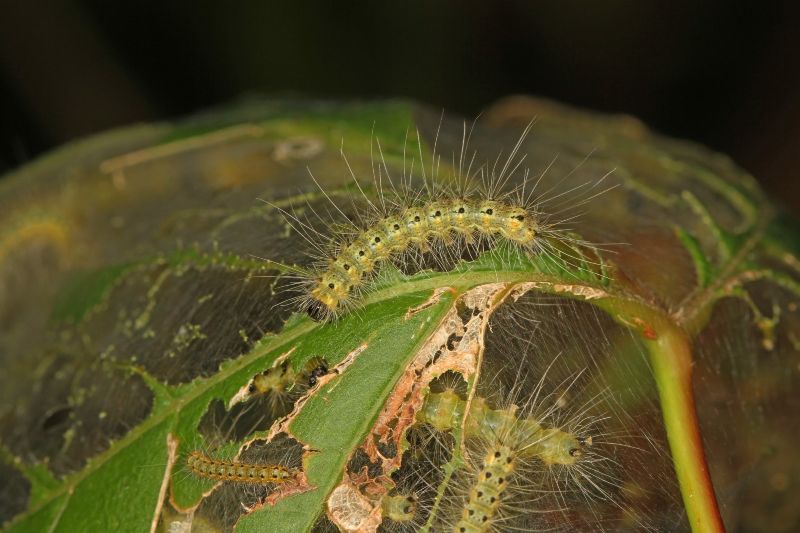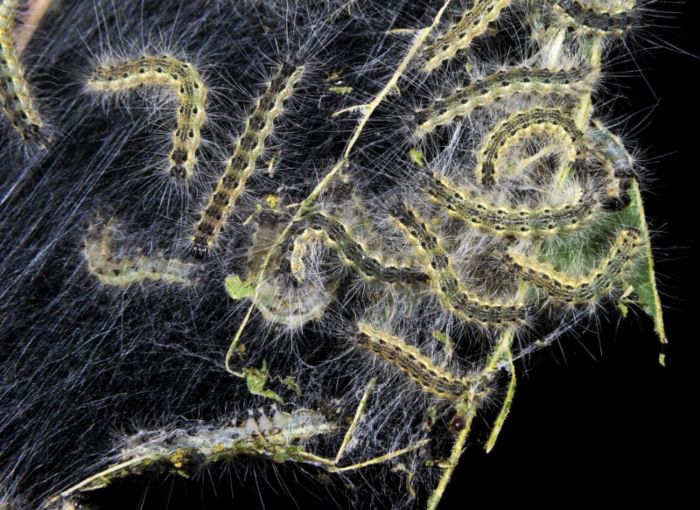Imagine walking into your yard and spotting silky, web-like nests draped over the branches of your trees. Feels like a scene straight out of a horror movie! In reality, these unsightly webs are the handiwork of webworms, pests that can quickly turn your beautiful tree into an eyesore. But don’t worry! With the right knowledge and strategies, you can manage all types of tree pests and disease.
What are Webworms?
Webworms, commonly referred to as fall webworms, are caterpillars that build communal webs in the branches of trees. These pests belong to the moth family Erebidae and are found across North America and parts of Europe. Despite their name, webworms can appear in the summer and early fall, depending on your location and climate. Their primary goal? Feeding on the foliage of trees and shrubs to prepare for their transformation into moths.

What Do Webworms Look Like?
Webworms start as hairy caterpillars with distinct markings. Depending on the species, they may be pale green, yellow, or brown with black dots and long white or black hairs. Adult webworms are white moths with black or brown spots on their wings.
The most obvious sign of webworms is the large, silky webs they construct at the ends of branches. These nests protect the caterpillars as they feed on leaves inside the web.

Are Webworms Dangerous?
Webworms are not dangerous to humans, pets, or wildlife because they don’t sting or bite. They are more of a nuisance and an eyesore. For trees however, webworms are a more serious problem. While they rarely kill healthy, mature trees, their feeding can weaken trees over time, making them more susceptible to other pests and diseases.
How Do Webworms Affect Your Trees?
Webworms feed on tree leaves while hiding in their protective webs. Heavy infestations can lead to extensive defoliation, which can stress trees, especially if it occurs repeatedly over several seasons. Trees weakened by webworm activity may have reduced growth, increased vulnerability to pests, and branch dieback. Young or already stressed trees are particularly at risk and may suffer long-term damage if not treated promptly.

How Do I Get Rid of Webworms?
The good news is that webworm infestations are manageable with the right approach. Here are some ways to get rid of these pests and protect your trees
Strategy #1 – Physical Removal
For small infestations, physical removal is simple but effective. Use a pole, rake, or broom to tear open the webs and expose the caterpillars to predators like birds. For branches within reach, prune and dispose of the infested sections. Be sure to bag and seal the removed branches to prevent the caterpillars from spreading.
Strategy #2 – Biological Control
Biological control involves using natural predators or pathogens to manage webworm populations. Birds, spiders, and predatory insects like wasps are effective at keeping webworms in check. You can encourage them by creating a wildlife-friendly yard with diverse plantings and birdhouses.
Another option is Bacillus thuringiensis (Bt), a bacterium that targets webworm caterpillars without harming beneficial insects, humans, or pets. Bt is most effective when applied to young larvae, so monitor your trees closely and apply at the appropriate time.
Strategy #3 – Chemical Treatments
For severe infestations, chemical treatments may be necessary. Insecticides containing active ingredients like spinosad or pyrethroids can effectively target webworms. These should be applied directly to the webs and surrounding foliage for maximum impact. Always follow the label instructions and consider hiring a professional arborist to ensure safe and effective application.
Strategy #4 – Cultural Practices
Having good overall tree health makes your trees less vulnerable to webworm infestations. Proper watering, mulching, and fertilization will help your trees recover from stress caused by defoliation. Regular pruning to remove dead or weak branches can also discourage webworms from establishing their nests. Also, keeping your yard clean and free of debris can reduce the chances of overwintering webworms reemerging in the spring.
Contact A Plus Tree Services
If webworms have taken over your trees, A Plus Tree is here to help. Our team of arborists can assess the infestation, recommend the best course of action, and apply effective treatments. Don’t let webworms turn your landscape into a horror story scene. Contact us today to schedule a free assessment for healthier trees!





